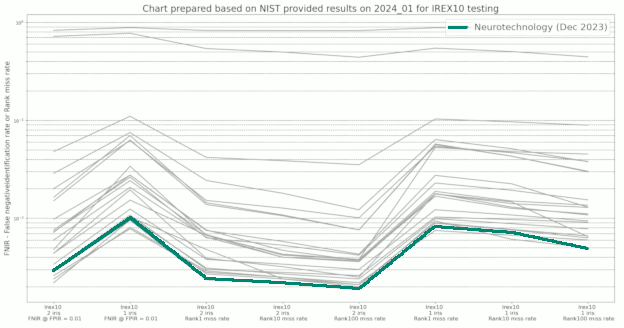IREX 10 Evaluation
Neurotechnology's iris recognition algorithm has been judged by NIST as the most accurate among the IREX 10 participants in the Rank 1 category. The submitted algorithm outperformed other contenders in both single-eye and two-eye assessments. Also, it showed top results for most performance metrics.
The IREX 10 evaluation is an ongoing evaluation of automated iris recognition algorithms, which is run by NIST. Different vendors submit their biometric algorithms for the evaluation. The tests are run over operational data for identification (one-to-many) tasks. See IREX 10 official page for more information.
The main goals of the IREX 10 evaluation are: assess the current state of the art, facilitate research and development, assess the impact of demographics, twins and automated quality assessment.
The evaluation has started in October 2019 and continues till now. The participants can submit their algorithms every 3 months, but the results are shown only for the two latest submissions.
Our latests submission was done in December, 2023. There were 24 companies with 89 submissions participating in the evaluation as of January 25, 2024.
The provided accuracy metrics are: FNIR at FPIR 0.01 and Rank 1, Rank 10, Rank 100.
The chart below shows the accuracy of all tested algorithms, with highlighted lines corresponding the Neurotechnology algorithm.
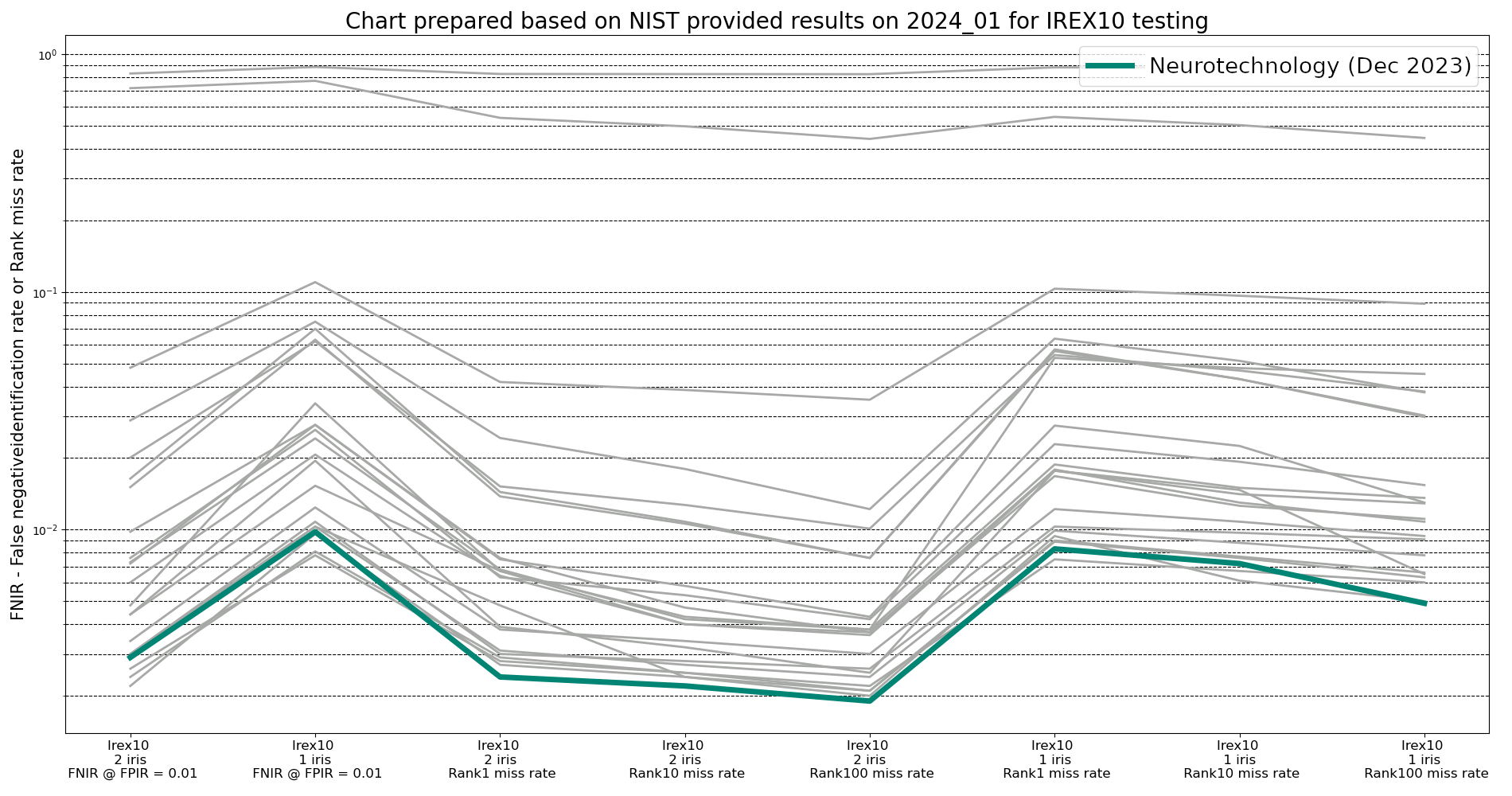
Two-eye assessment
The Two-eye assessment uses a biomettric dataset with 1,000,000 iris images, which correspond to 500,000 persons with 2 iris images per person. Neurotechnology showed 99.76% accuracy rate in the Rank 1 category.
We highlight the results for our two latest submissions for these categories and metrics:
-
FNIR@FRIR of 0.01 (False Negative Identification Rate at 0.01 False Positive Identification Rate):
- search time vs. accuracy (Figure 1);
- template creation time vs. accuracy (Figure 2);
- template size vs. accuracy (Figure 3);
-
Rank 1 (the correct suspect is displayed in the first place of candidates).
- search time vs. accuracy (Figure 4);
- template creation time vs. accuracy (Figure 5);
- template size vs. accuracy (Figure 6);
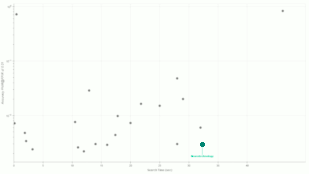
Click to zoom
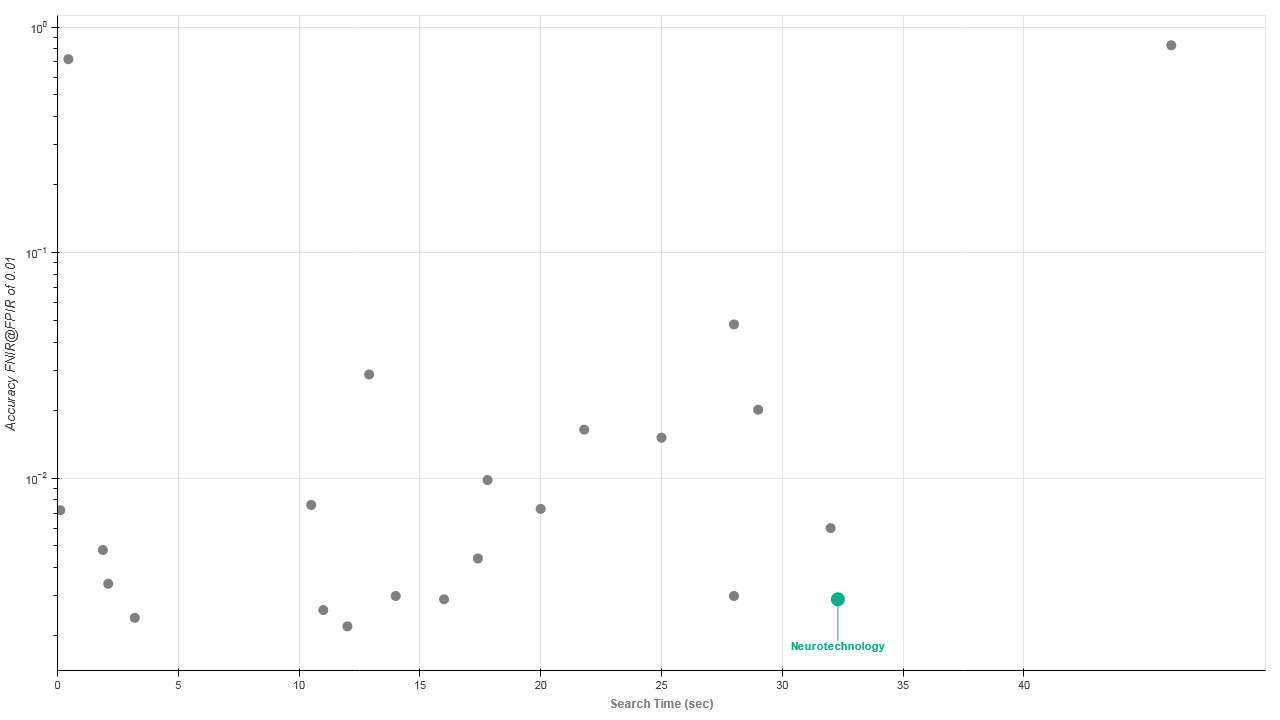

Click to zoom
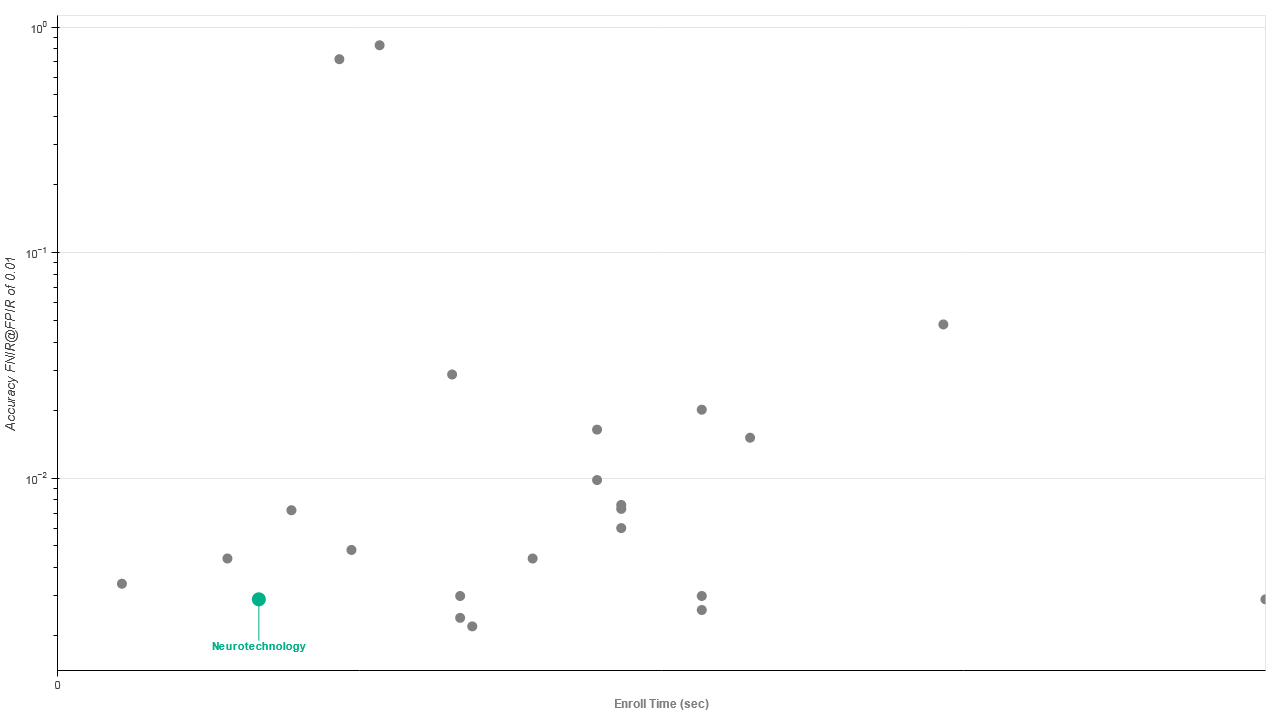
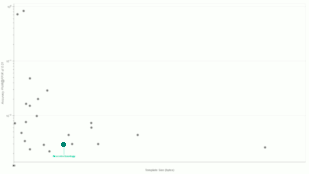
Click to zoom
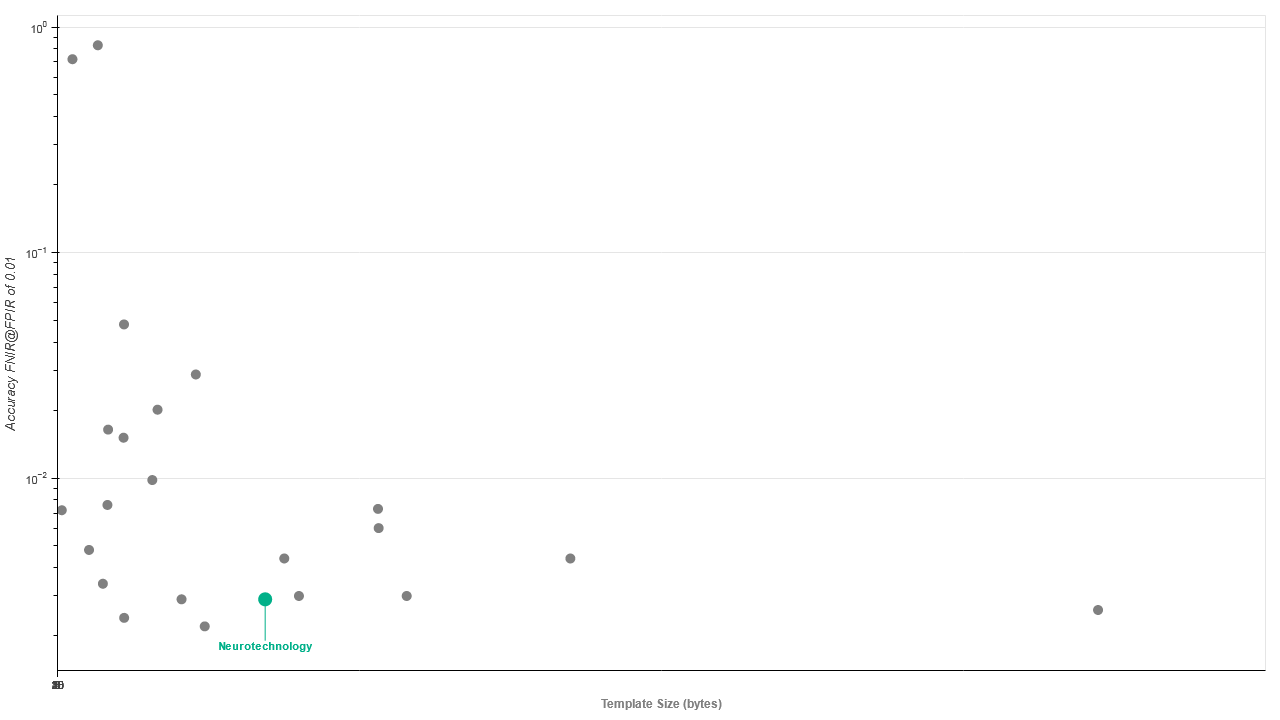
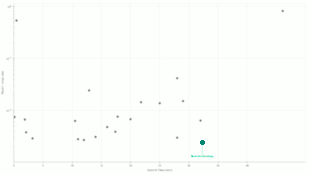
Click to zoom
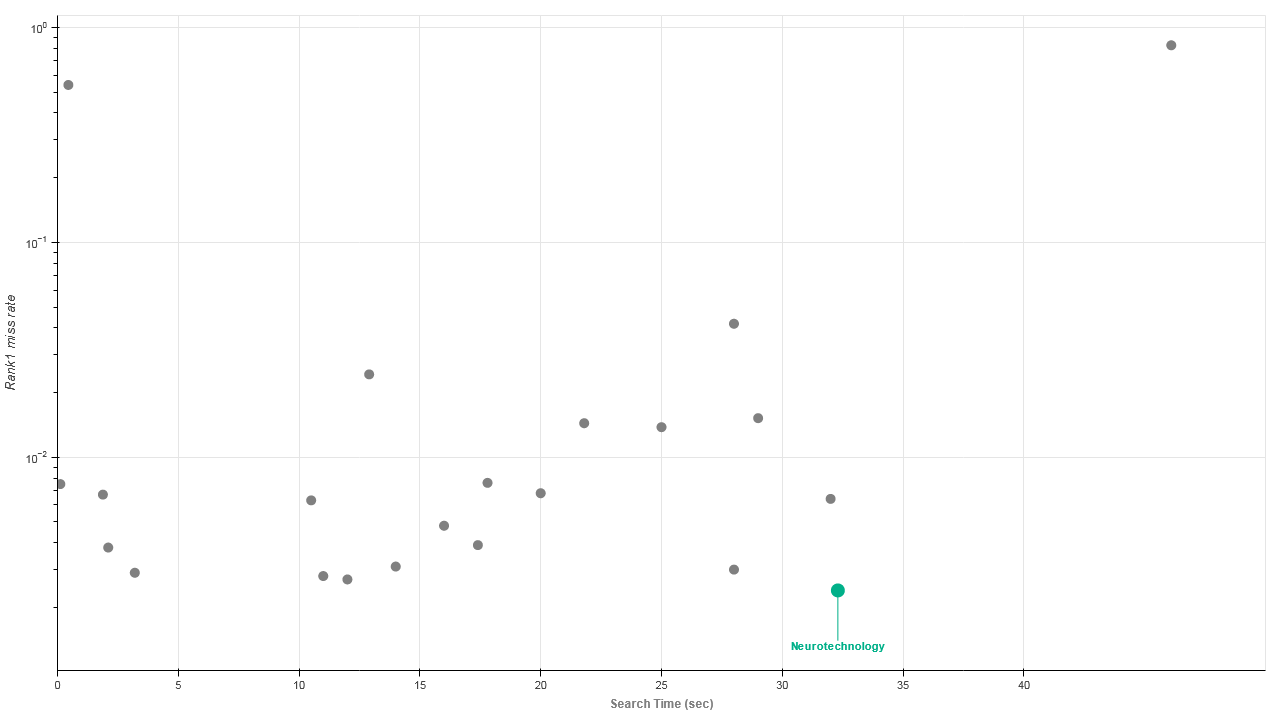
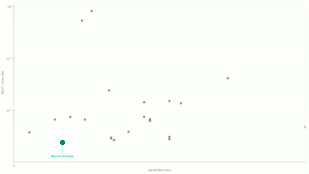
Click to zoom
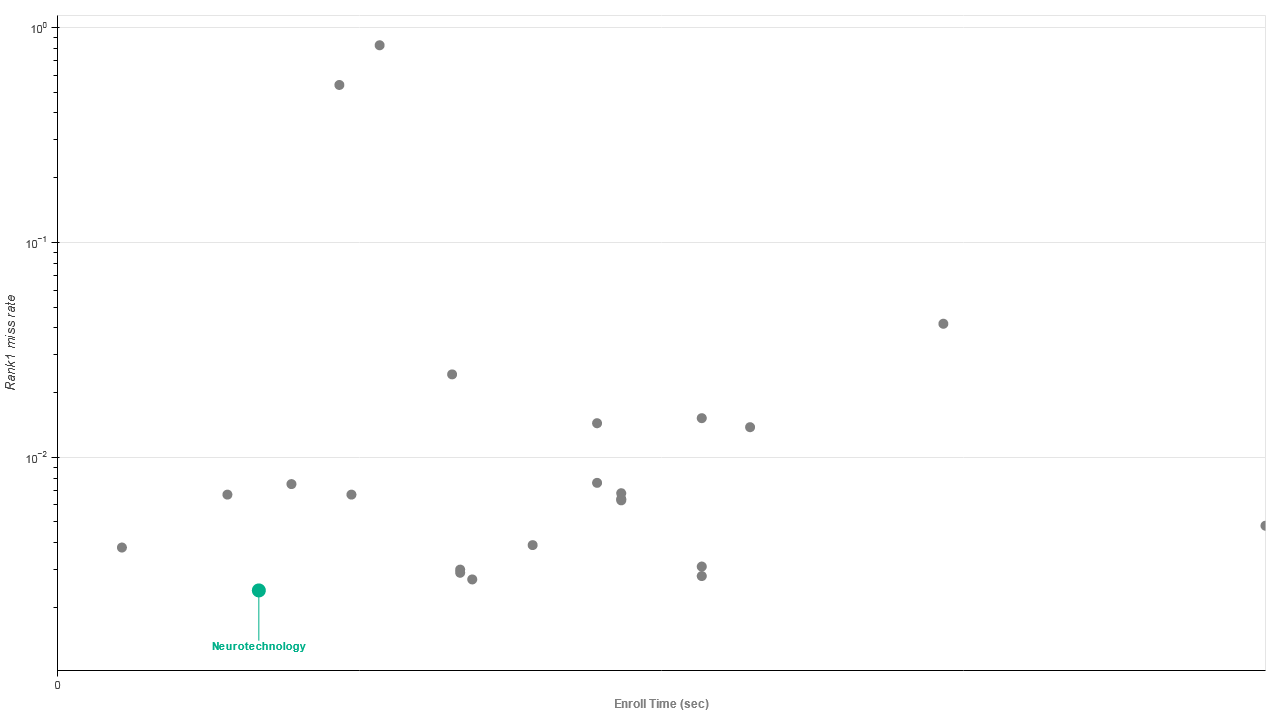
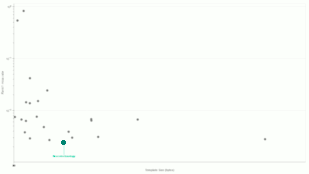
Click to zoom
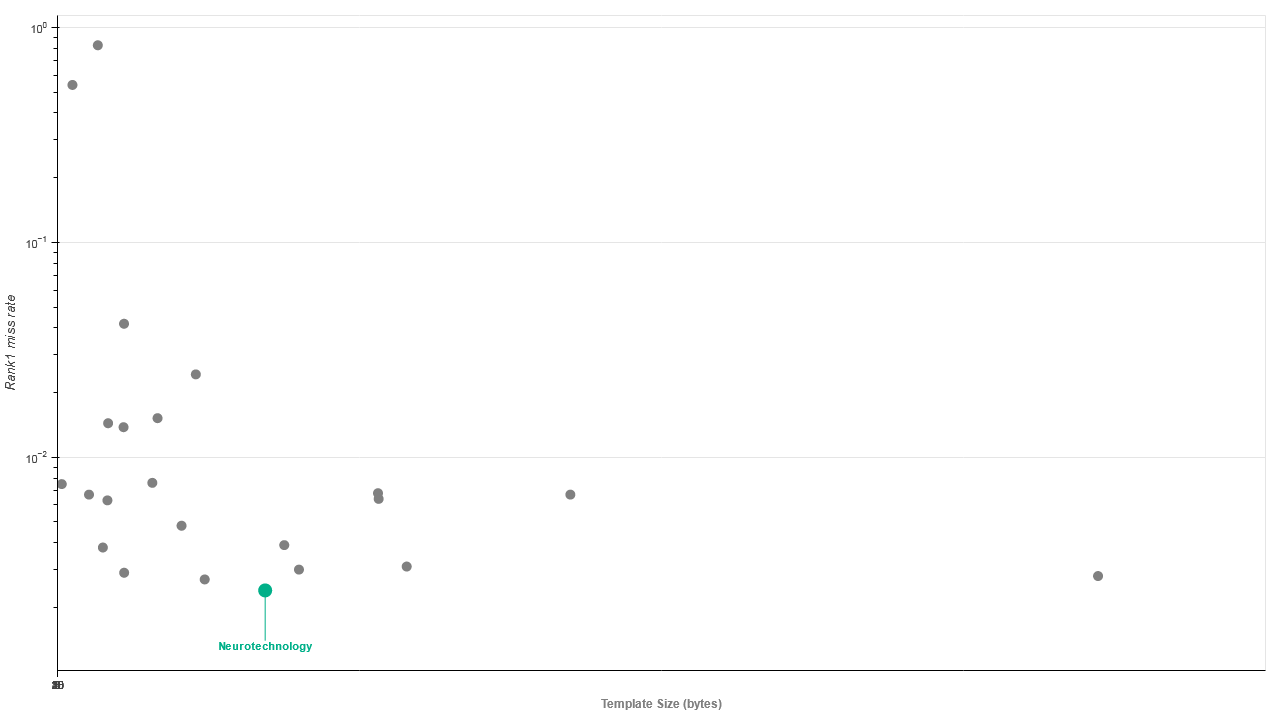
Single-eye assessment
The Single-eye assessment uses a biometric dataset with 1,000,000 iris images, which correspond to 1,000,000 persons with 1 iris image per person. Neurotechnology showed 99.17% accuracy rate in the Rank 1 category.
We highlight the results for our two latest submissions for these categories and metrics:
-
FNIR@FRIR of 0.01 (False Negative Identification Rate at 0.01 False Positive Identification Rate)
- search time vs. accuracy (Figure 7);
- template creation time vs. accuracy (Figure 8);
- template size vs. accuracy (Figure 9);
-
Rank 1 (the correct suspect is displayed in the first place of candidates)
- search time vs. accuracy (Figure 10);
- template creation time vs. accuracy (Figure 11);
- template size vs. accuracy (Figure 12);
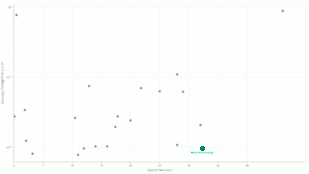
Click to zoom
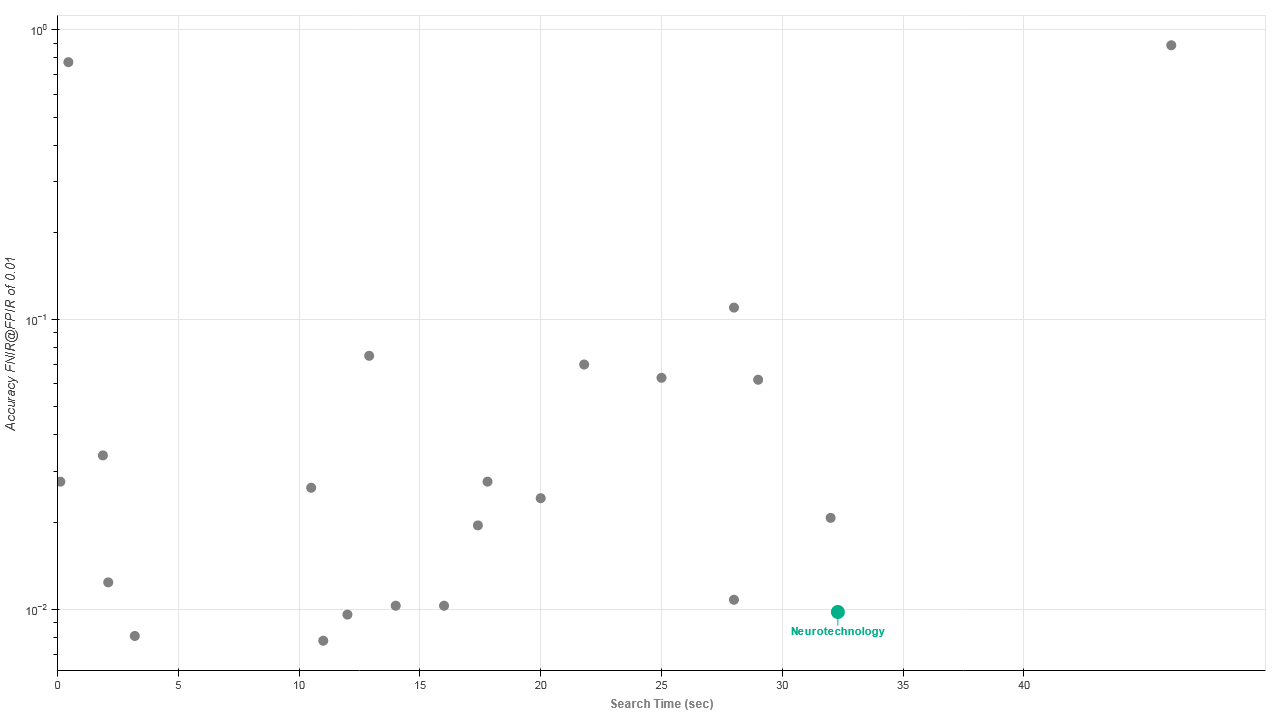
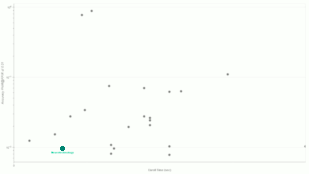
Click to zoom
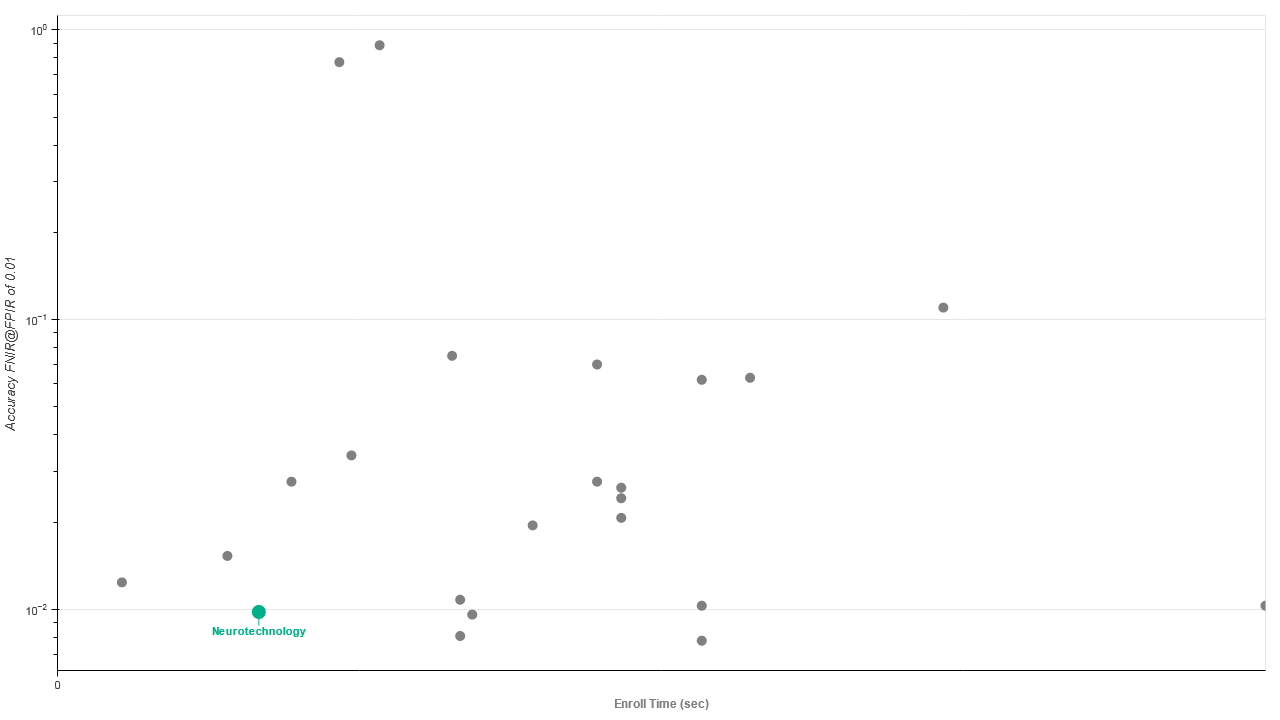
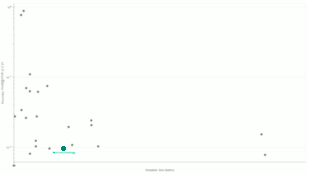
Click to zoom
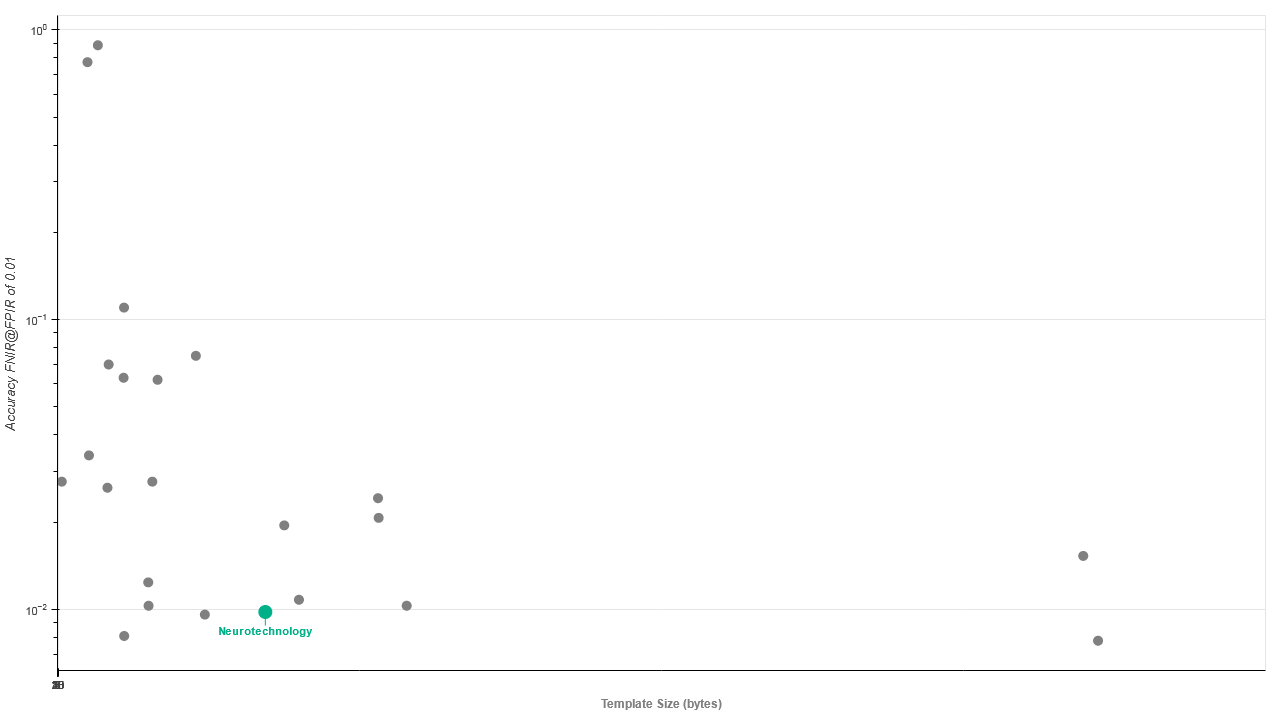
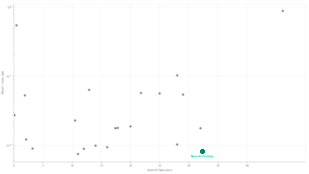
Click to zoom
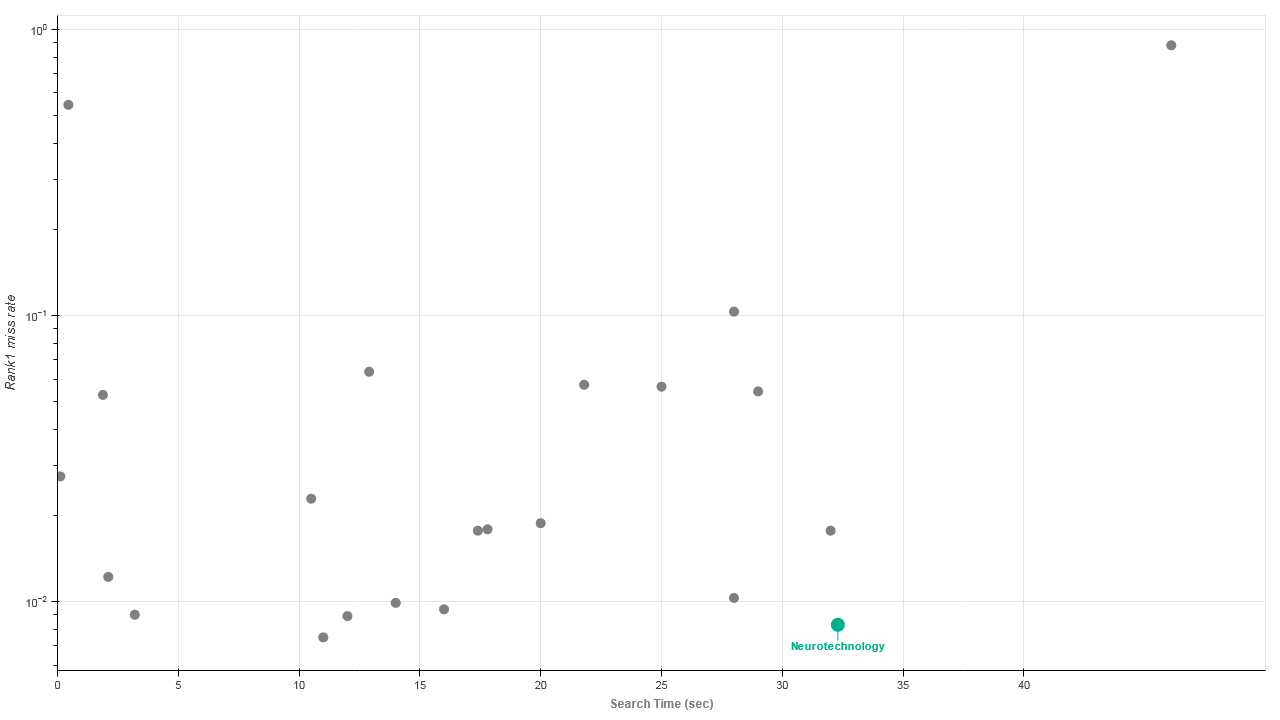
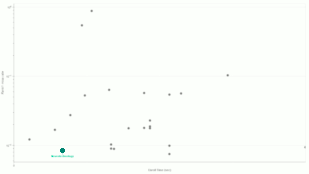
Click to zoom
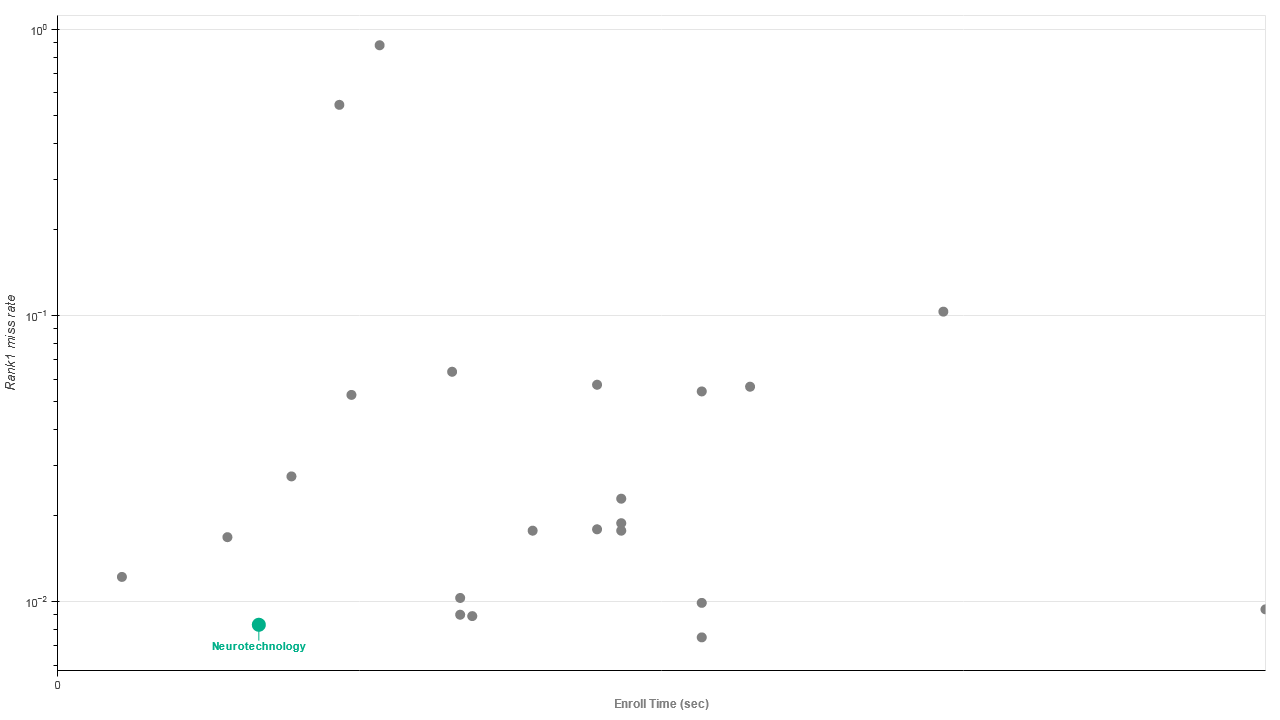
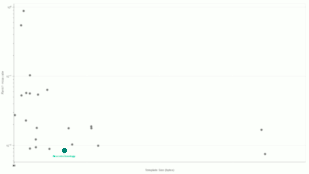
Click to zoom
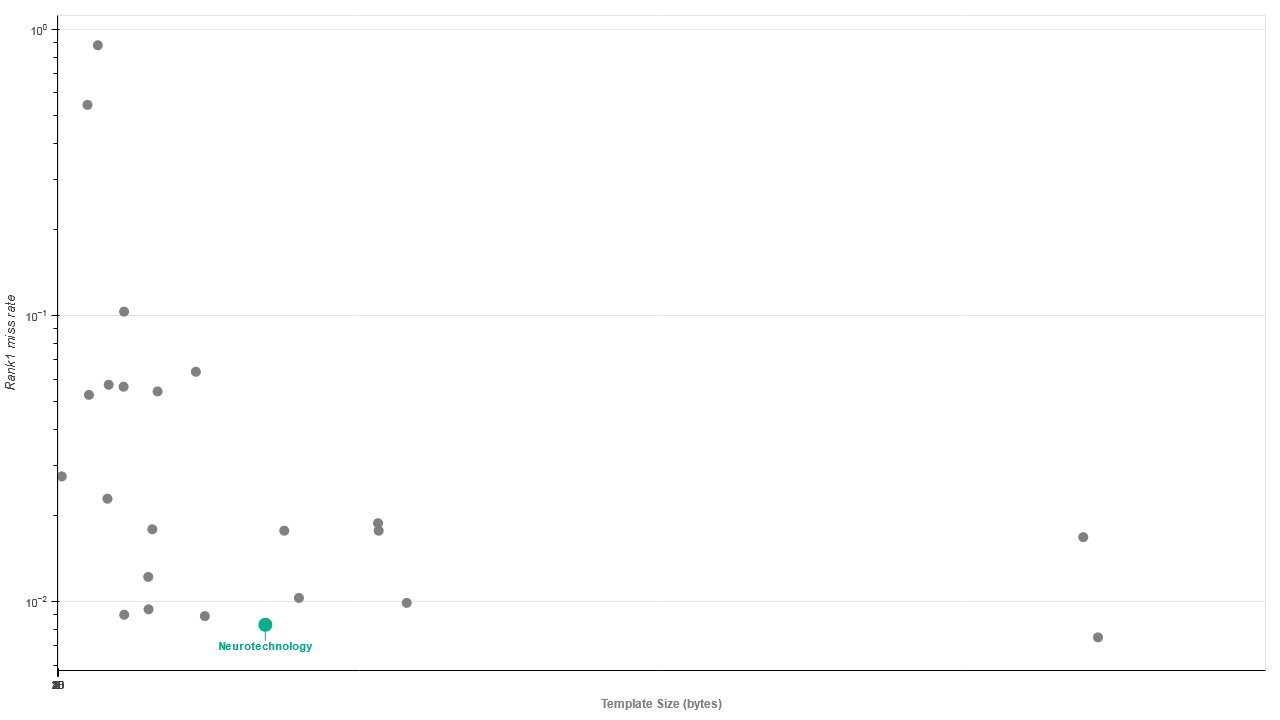
See the IREX 10 official page and full report for more information on the IREX program and testing methodology.

